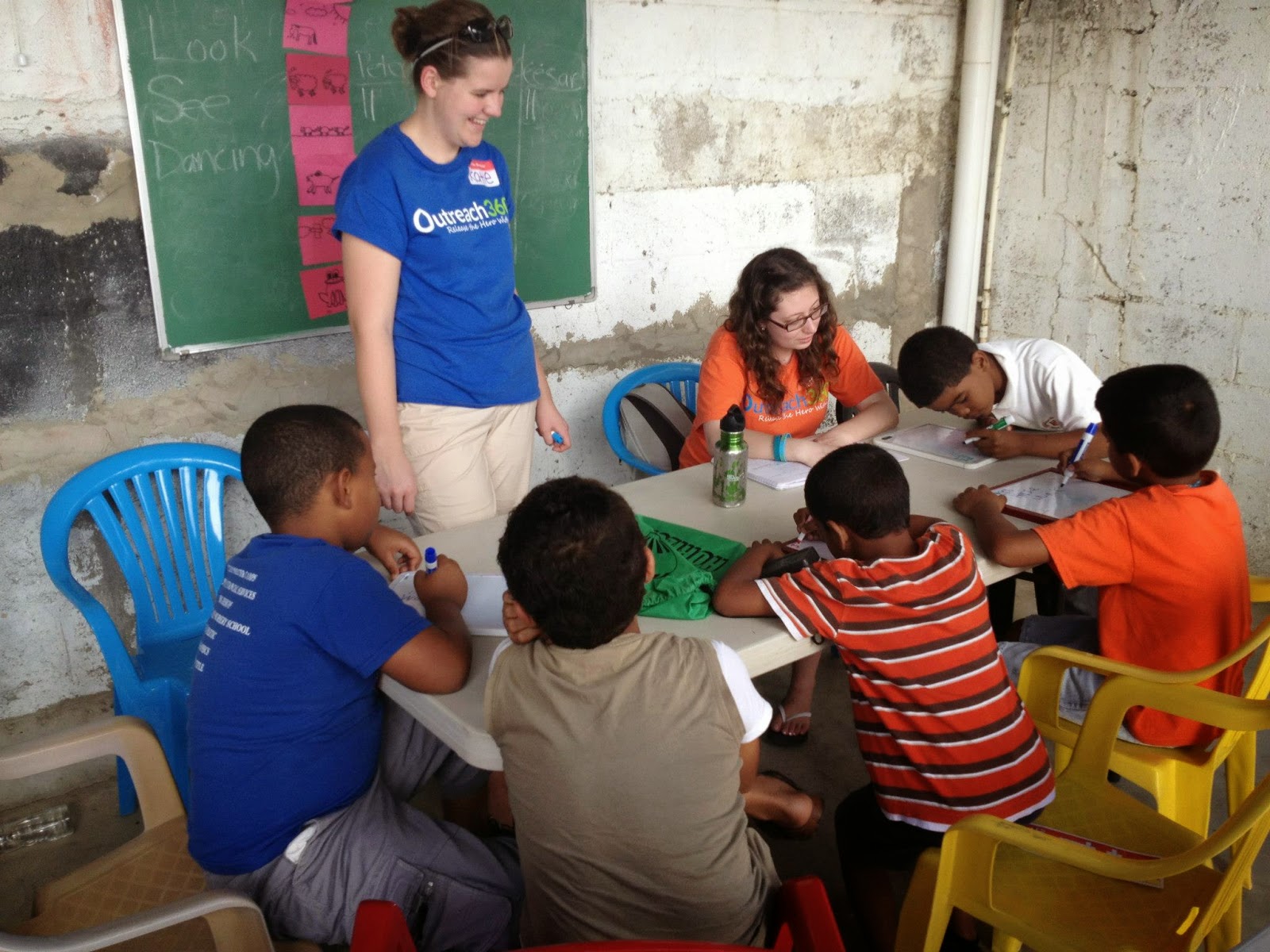 |
| Humber Student, Dominican Republic |
Service-learning within an academic course can take many forms and various degrees of community involvement. Before designing a service-learning course, it's important to consider the following factors:
- What are my learning objectives?
- What resources do I have available?
- What will my time commitment be?
Beginner "service-learning" course: The beginner or "pure" service-learning course is often focused on the community service work, and the learning objectives are tied to social justice or civic engagement. These courses are often considered electives as they are inter-disciplinary in nature. From a developmental perspective, the connection between service and course content is easy for students to understand.
Example: Students visit a community organization or volunteer to understand concepts of social justice.
Drawback: may come across as "less" academic
Level of Difficulty: Easy
Service-learning as course requirement: Similar to the beginner course, students are required to complete a service component (for ex. volunteer hours) related to at least one course concept. The focus is on student learning, the service requirement is minimal and often students can select their own experience.
Example: Students are required to complete 10 volunteer hours as part of a leadership course.
Drawback: brief service limits learning opportunities; may reinforce negative stereotypes if issues are not addressed
Level of Difficulty: Easy
Discipline-based service-learning course: Within a discipline-based service-learning course the link between service and course content is explicit. The service must fill a community need as negotiated with a community partner. Learning outcomes, reflective activities and assessment methods are inextricably linked. This creates an optimal context for student learning and psycho-social development.
Example: Applied technology students work to develop a prototype for a specialized mobility device.
Drawback: time-consuming; types of service opportunities and projects may be limited
Level of Difficulty: Difficult
Problem-based service-learning course: Although similar to a discipline-based course, the problem-based course is more flexible in terms of learning outcomes as students work in partnership with community organizations to develop a project to address a community need. Community partners are involved in the design and assessment of the project.
Example: Exercise Science and Lifestyle Management students develop an exercise routine for elderly residents.
Drawback: student solution may not be adopted by organization; students may see themselves as experts;
Level of Difficulty: Moderate-Difficult
The above service-learning types have been adapted from: Enos & Troppe, 1996 (as cited in Jacoby et al.) and Heffernan, 2011.

No comments:
Post a Comment